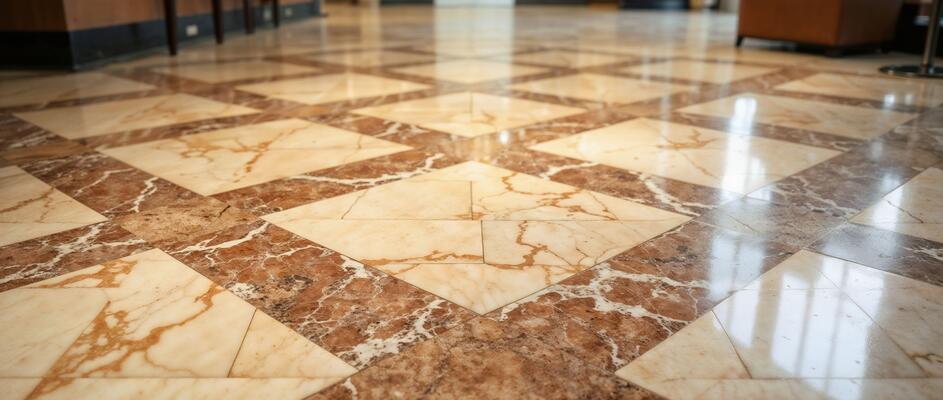WELCOME TO KINGHOME
Get A Free Quote
We will get back to you within 8 hours

In stone renovation projects or stone maintenance work, we often encounter the problem of marble alkali efflorescence. The alkali efflorescence reappears within just two or three days after cleaning, which not only affects the appearance but also the cleaning quality, really being an annoying issue. Another difficulty is that sandstone is very easy to shed powder and sand particles, and its capillaries are prone to dirt accumulation. Currently, the use of sandstone in decoration design is increasing substantially.

Before analyzing the alkali efflorescence, we must understand the structure of marble. Marble is a metamorphic rock formed from original rocks in the earth’s crust under high temperature and pressure. Marble is mainly composed of calcite, serpentine, and dolomite. Calcite is colorless or white and is a calcium carbonate mineral, the most common type in natural calcium carbonate. Serpentine is a general term for hydrous magnesium-rich silicate minerals, often existing as fine-grained leaf-like or fibrous structures, with common colors including green, yellow, white, brown, and black. Its recrystallization and renovation polishing effects are sometimes unsatisfactory. Dolomite ore is mainly composed of calcium carbonate and magnesium carbonate, with a Mohs hardness (MOH) ranging from 3.5 to 4.
The formation of alkali efflorescence is that when there is sufficient pressure and moisture at the bottom of the marble, alkali salts such as calcium carbonate, calcium hydroxide, sodium carbonate, and magnesium carbonate can be carried to the surface from the gaps in the marble texture. After the water stains dry, powdery substances with adhesion are formed. We also study the reasons for the looseness caused by the structure of sandstone incidentally. Sandstone is a type of sedimentary rock, formed by stone particles being eroded by water and deposited on riverbeds, and becoming hard after thousands of years of sand grain cementation and accumulation. Cement refers to the chemical precipitate that plays a bonding role between rock particles during the diagenetic period. Most sandstones are composed of quartz or feldspar. Due to the low bonding effect of the cement in sandstone itself, substances such as quartz SiO₂ are easily shed during daily use and grinding renovation, resulting in the loss of surface flatness, unevenness, and easy dirt accumulation.
To solve the problem of marble alkali efflorescence, first of all, we must do a good job in the waterproof process during the stone paving project, control the dryness of the underground foundation surface, and prevent leakage of underground water pipes. Some auxiliary products should be used in the subsequent maintenance of marble to improve the severe situation of alkali efflorescence. As is known to all, waterproof agents can play a waterproof role. Many engineering companies try to use waterproof agents to suppress alkali efflorescence. Numerous cases have proved that waterproof agents not only cause discoloration of marble but also suppress the evaporation of water vapor, causing marble to expand and burst. In particular, oily waterproof agents will shrink as the temperature rises. The structural reason of sandstone leads to its inherent defects. It is best to increase its surface density and hardness to resist external friction and ensure sufficient anti-fouling ability. Summarizing the above points, we should select protective products from the aspects of protecting the original color and breathability of the stone, and increasing the hardness, density, and anti-seepage and anti-fouling functions of marble.
“Revontulet” 2-in-1 Stone Reinforcing Hardener is suitable for soft stones with extremely high water absorption. It can effectively reduce the loss of calcium carbonate ions in stones and significantly enhance the hardness of stones. At the same time, it has excellent waterproof function. As a water-based product, it can fully penetrate into the interior of the stone without darkening the color of the stone; it can combine with soft alkali salts such as calcium carbonate to form a harder new substance, with no visible change in appearance; its molecules fill the gaps in marble to enhance the density of marble and greatly improve the anti-fouling level. Apply a layer of “Revontulet” 2-in-1 Stone Reinforcing Hardener on the original water-stained surface of marble. After 1 day, it can be observed that the water vapor at the bottom has long evaporated, but a few drops of clean water dripped from above cannot penetrate into the interior of the marble, which can prove its protective ability and breathability. “Revontulet” 2-in-1 Stone Reinforcing Hardener has proved in many recent cases that it is suitable not only for the prevention and treatment of existing alkali efflorescence but also for protective use before renovation projects.
Written By: Chen Weihui, Technical Director of China Region, Hong Kong Jinjinghong (International) Chemical Trade Co., Ltd.
About the Author
Mr. Chen Weihui joined Hong Kong Jinjinghong (International) Chemical Trade Co., Ltd. in 2007 and served as the Technical Director. Prior to that, he worked in a large-scale cleaning company for ten years, holding positions such as On-site Manager, Engineering Department Manager, and Engineering Director. He has rich theoretical and practical experience in stone renovation and maintenance. He has published multiple articles in the Stone Consultation column of China Cleaning magazine. He has also been a keynote speaker at seminars hosted by China Cleaning and various cleaning media on many occasions, introducing technologies of stone renovation and maintenance, which have been well received. He is a senior consultant in the professional cleaning industry.